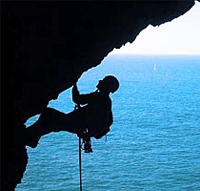
The study included researchers who examined osteological changes in the hands and fingers of rock climbers that result from intense, long-term mechanical stress placed on these bones.
They verified whether rock climbing led to increased cortical bone thickness and joint changes associated with osteoarthritis. Researchers also wanted to identify whether climbing intensity and frequency of different styles of climbing influence changes.
“Radiographs of both hands were taken for each participant and were scored for radiographic signs of osteoarthritis using an atlas method. We compared 27 recreational rock climbers and 35 non-climbers for four measures of bone strength and dimensions and osteoarthritis. The results suggest that climbers are not at an increased risk of developing osteoarthritis compared with non-climbers,” Adam Sylvester of the University of Tennessee said.
“Climber’s finger and hand bones are, however, greater in cross-sectional area and total width, indicating that additional bone is being deposited on the external surface, not usually seen in adults. The strength of the finger and hand bones are correlated with styles of climbing that emphasizes athletic difficulty. Significant predictors include the highest levels achieved in bouldering and sport climbing,” he added.
